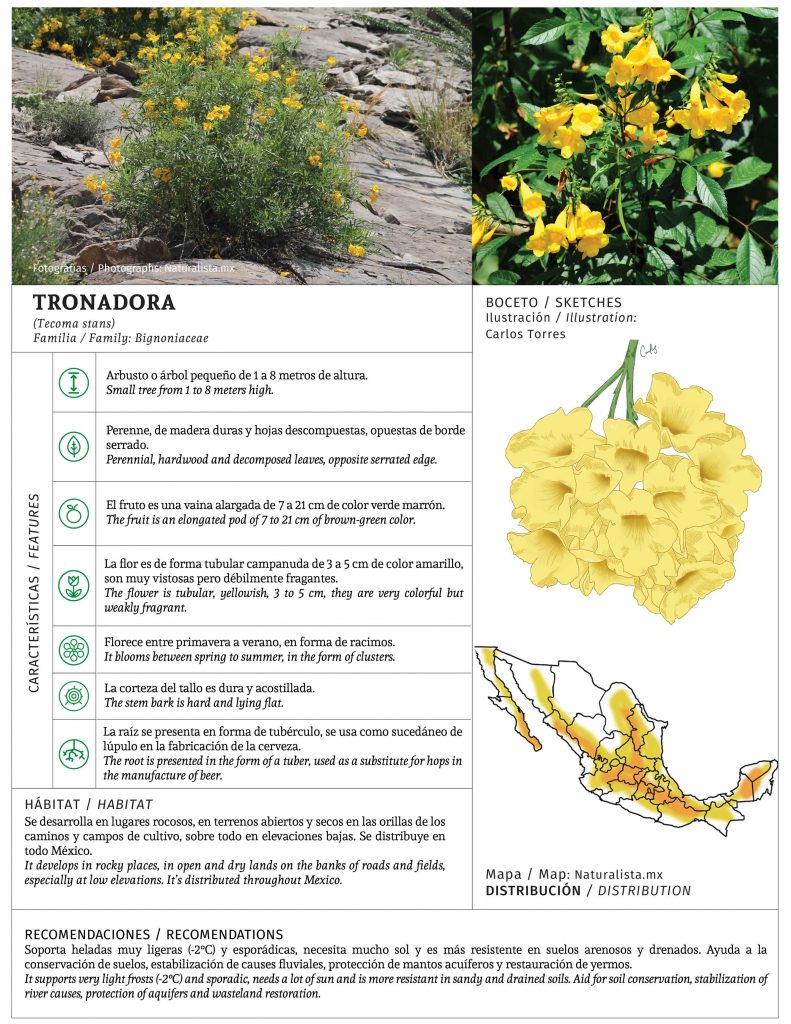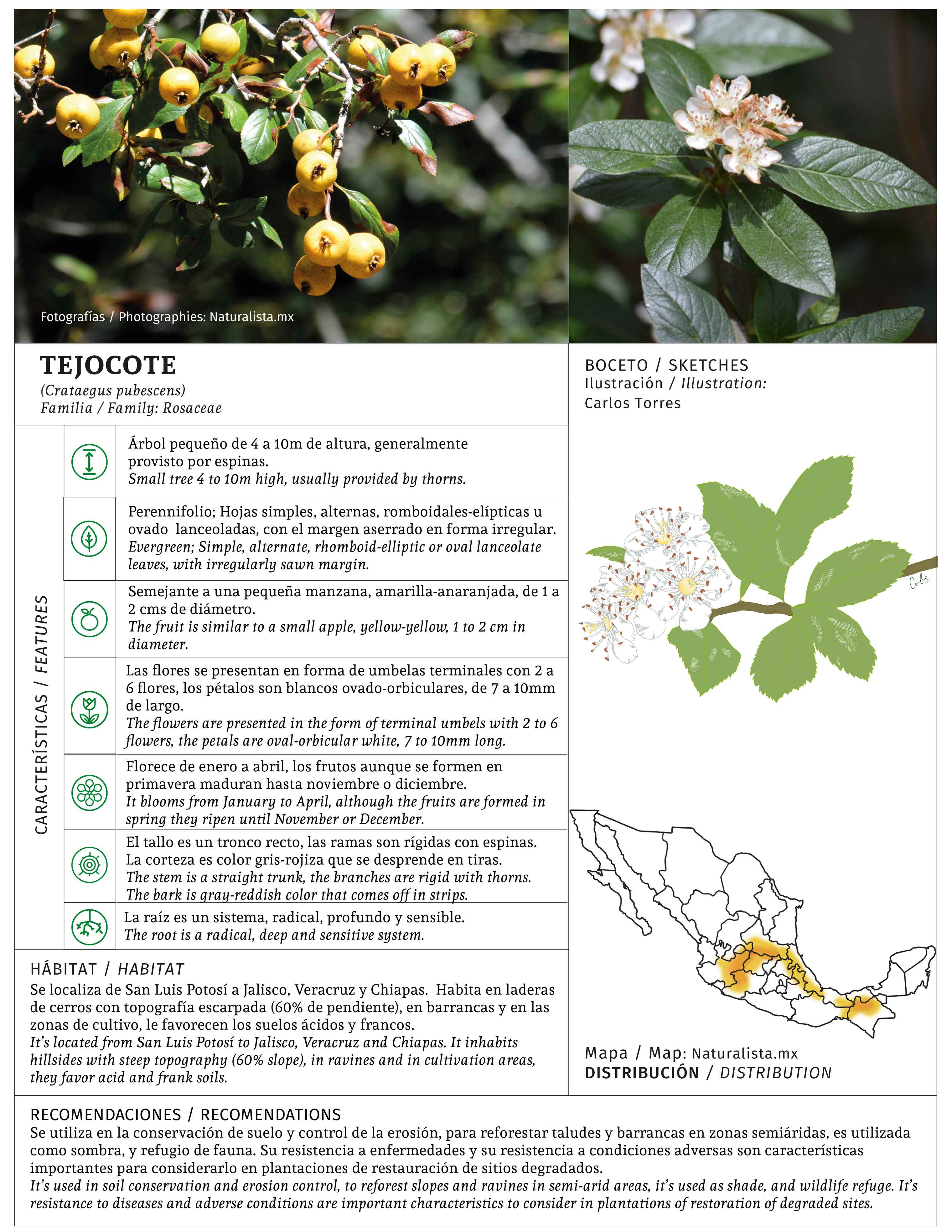Secondary vegetation for ecological restoration in México
In a relatively short time, the vegetation in Mexico has undergone extensive anthropic alterations.A fundamental resource to conserve and increase the fertility of the soil and the diversity of species is the “secondary vegetation” which has the potential to grow in deeply disturbed areas and also over time, it will allow the restoration of the soil, a microclimate and the restoration of part of the flora and fauna that still survives in them. (CONABIO, 1999).



REFERENCES
Tecoma stans
Comisión Nacional para el Conocimiento y uso de la Biodiversidad. “Catálogo especies y árboles”. http://www.conabio.gob.mx/conocimiento/info_especies/arboles/doctos/12-bigno8m.PDF (Consultado el 4 agosto 2019)
Muhlenbergia robusta
Universidad Autónoma de Querétaro. Municipio de Querétaro. http://bio.uaq.mx/municipioQro/fichas.php?idA=234&n_img=1&F=1 (Consultado el 4 de agosto 2019)
Crataegus pubescens
Comisión Nacional para el Conocimiento y uso de la Biodiversidad. “Catálogo especies y árboles”. http://www.conabio.gob.mx/conocimiento/info_especies/arboles/doctos/59-rosac1m.pdf (Consultado el 4 agosto 2019)
Comisión Nacional Forestal. “Paquetes tecnológicos SIRE”. http://www.conafor.gob.mx:8080/documentos/docs/13/908Crataegus%20mexicana.pdf (Consultado el 4 agosto 2019).








